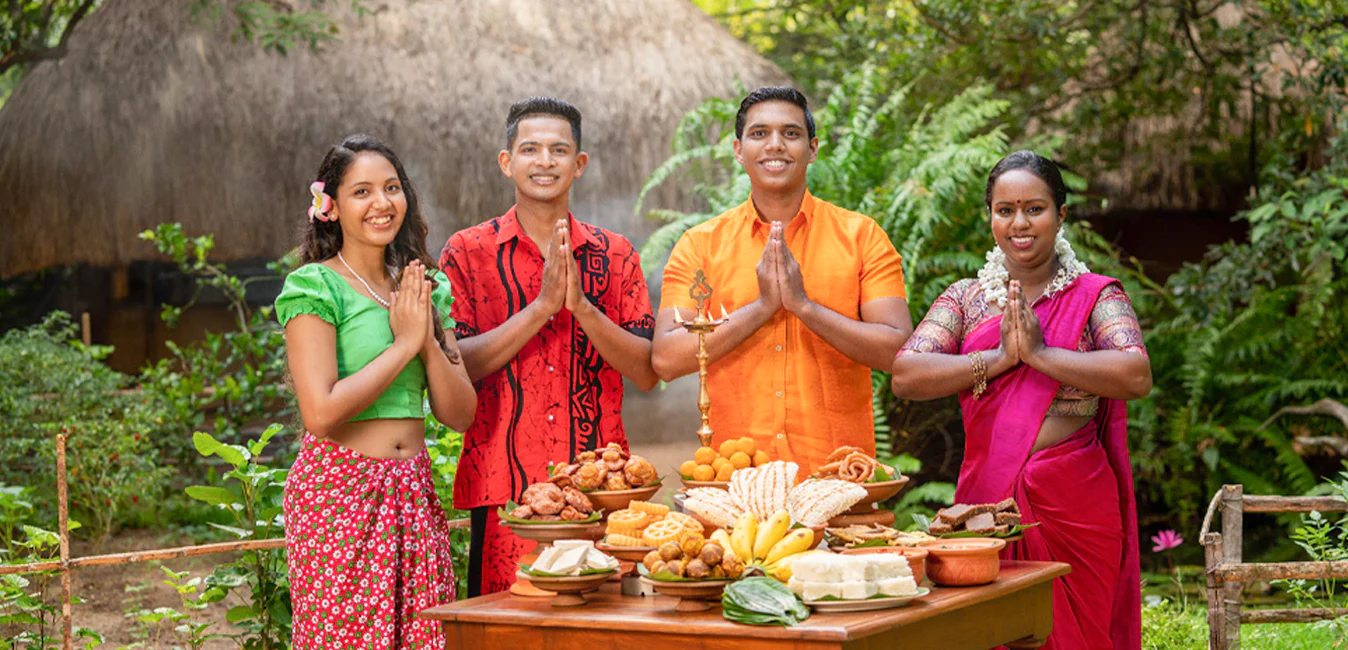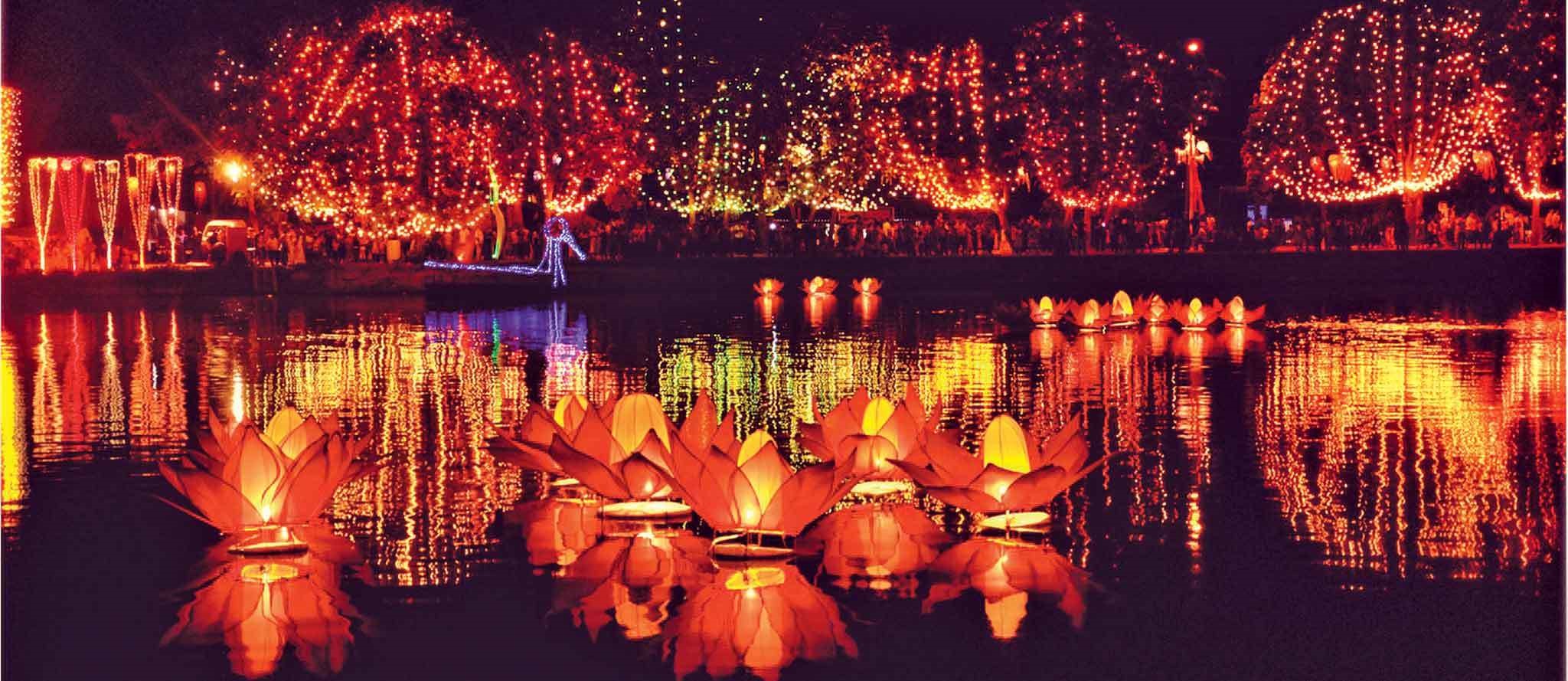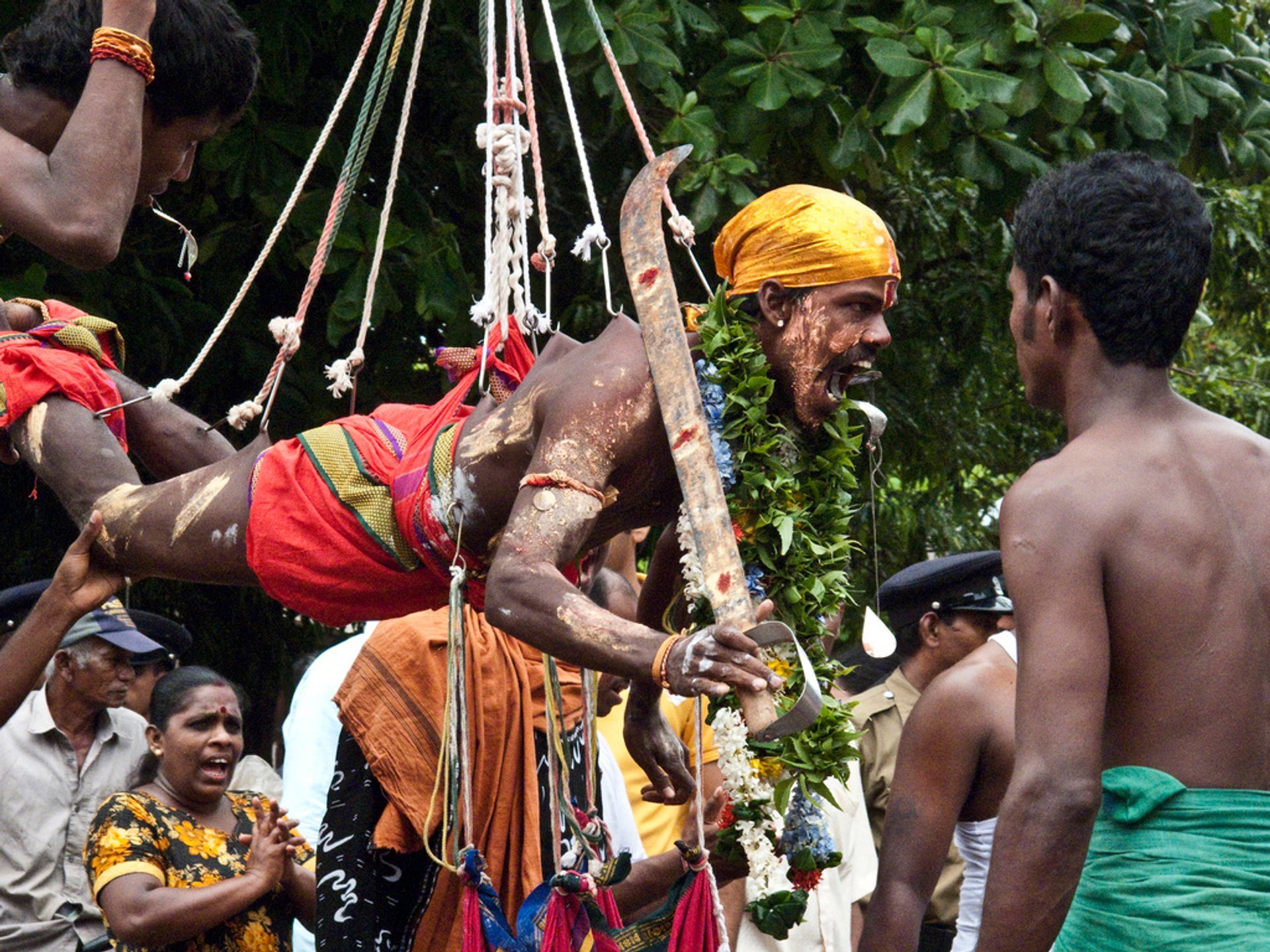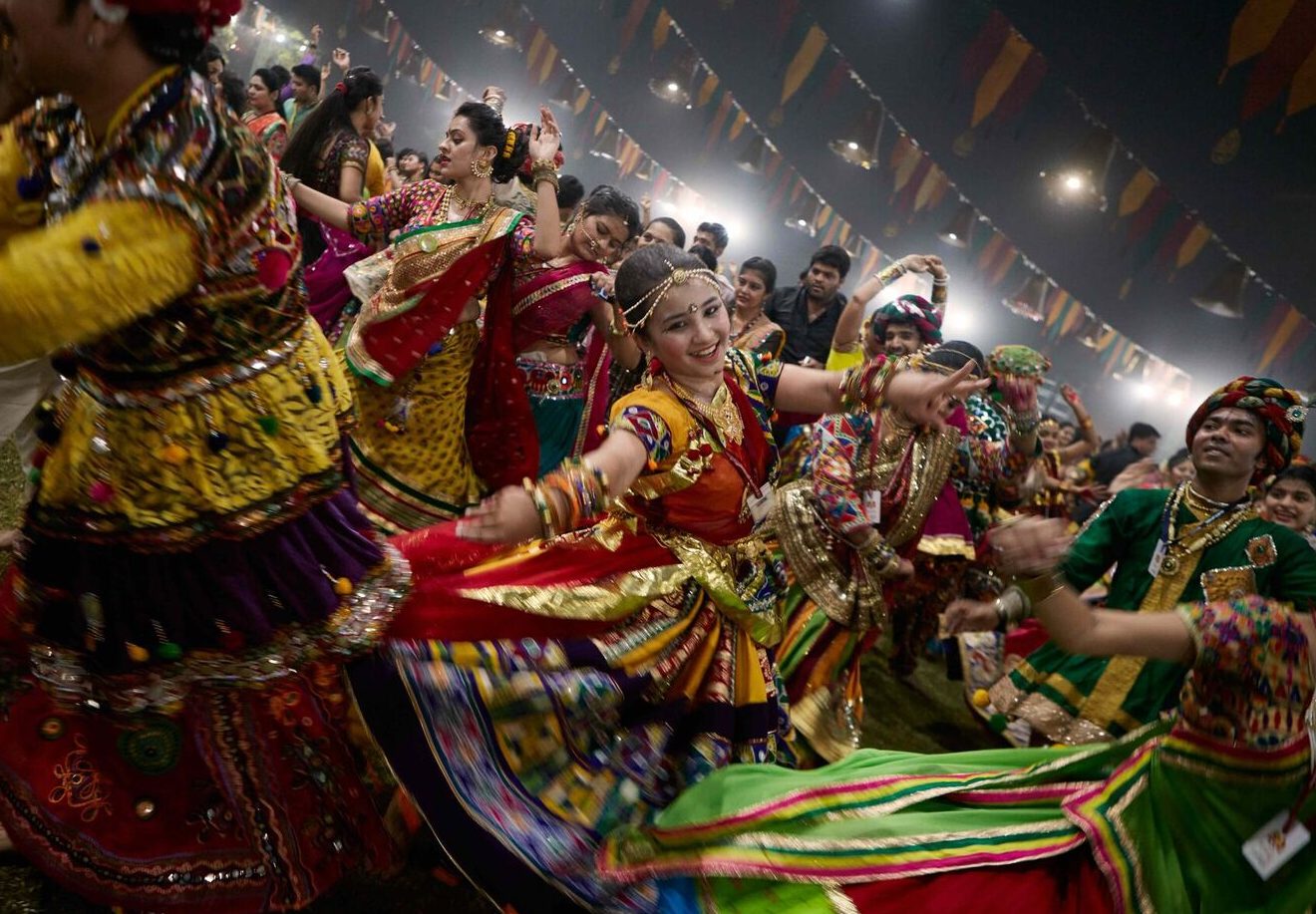Muslims celebrate Mawlid, fast during the Islamic month of Ramadan, and celebrate with the festival of (Eid al-Fitr) at the end of the month. (Eid al-Adha) is celebrated on the last month of the Islamic calendar, known as Dhu al-Hijjah. Each year, on or around April 13, Sinhalese and Tamil people celebrate the Sinhalese and Tamil New Year Festival. Easter and Christmas are observed by Christians.
Esala Perahera (A-suh-luh peh-ruh-ha-ruh) is a significant event that takes place in Sri Lanka during the month of Esala. It takes place in Kandy in July or August and has come to represent Sri Lanka in a special way. It is a Buddhist event with dancing and elephants that have been lavishly decorated. Fire dances, whip dances, Kandyan dances, and numerous more traditional dances are all performed. Usually, the elephants are decked out in expensive clothing. The customary "diya-kepeema" marks the festival's conclusion. An elephant is led through the streets of the city while pulling a coffin that Buddhists believe to contain a tooth relic from the Buddha.
Sinhala And Tamil New Year Festival

The traditional New Year's celebrations, which are observed by all Sinhalese and Tamils, take place from April 12 to 14. To mark the Sun God's transition from Pisces to Aries. It is a harvest festival that is mostly observed in the traditional manner by the peasants. This time of year is a holiday for the entire nation and is marked by a colorful and lavish festival. According to the litha, the Aluth Avurudu (New Year) is a time for family and friends, and various customs are followed (astrological time). The tables are set with traditional milk rice and sweets, freshly worn clothing, and boiled milk.
The youngsters spend the day playing numerous traditional activities, including the females plating swinging, shattering a pot while wearing blindfolds, and climbing a greased pole. In addition, the women, who are wearing traditional drums called Raban Padhas, fill the air while performing.

Vesak Festival
The most revered Buddhist holiday, Wesak, honors the life, enlightenment, and demise of the Buddha. It is celebrated on the day of the full moon in May and the day after. Buddhists in white begin arriving at the temple early each morning to participate in sila, during which they meditate, read scriptures, and hear sermons. The temples are packed at night with worshippers bringing flowers and donations. Wesak is still a happy celebration that is enthusiastically and creatively observed. Numerous exquisite Wesak paper lanterns in a variety of sizes and forms, as well as the countless little clay coconut oil lamps (pol-thel pahana), which flash all around the island, are among the numerous eye-catching decorations.

Poson Festival

Every year on the June full moon, Sri Lanka celebrates the 22 centuries since the introduction of Buddhism to the country. Devout Buddhists celebrate throughout the island, although the biggest festivities are concentrated at Mihintale, about 10 kilometers from Anuradhapura. Arahant Mahinda, the renowned king Asoka of India's son, first preached the Buddha Dhamma to King Devanampiyatissa at Mihintale.

Kandy Esala Perahera
The main Esala event, known as Esala Perahera (the festival of the teeth), takes place in Sri Lanka. With its exquisite clothing, it is incredibly spectacular. It takes place in Kandy in July or August and has come to represent Sri Lanka in a special way. It's a Buddhist celebration with dancing and elegantly dressed elephants. There are a number of different cultural dances, including fire dances, whip dances, and Kandian dances. Usually, the elephants are decked out in expensive clothing. The customary "Diya-Kepeema" marks the festival's conclusion.

Kataragama Esala Perahera

A significant Hindu celebration lasts two weeks in the village of Kataragama in July, and it ends in a breathtaking display of believers walking over flaming embers. Devotees arrive wearing their traditional dhotis and carrying enormous clay jugs. The big parade at night including an elephant, hundreds of devotees, and dancers in vibrant costumes is the festival's climax.

Nawam Maha Perahera
One of the most significant religious and cultural events in Sri Lanka is the Colombo Nawam Maha Perahera. Every year, millions of people, including an estimated 10,000 tourists, see this show. On both days, seating for 1,000,000 people is offered without charge. The Perehara brings back the traditional dances, attracting groups from all across the nation and giving them a chance to show off their skills. The traditional dance troupes benefit from such occasions since there is a renewed interest in their dance and forms of entertainment. The preservation of Sri Lanka's historic cultural heritage is directly related to the Perehera. Gangarama Temple Colombo organizes the Perahara on Fullmoon Poya Day every February.

Vel Festival

A beautifully adorned wooden cart traveled from the Sea Street Sammaankodu Sri Kathirvelaayuthaswamy temple in Colombo to the Sammaankodu Sri Maanikka Vinayagar temple in the evening.
The vibrant procession passed through Colombo's major thoroughfares.
The procession was headed by traditional musicians playing the Thavil and Naathaswaram.
After a hiatus of 16 years, the Vel festival returned to Colombo in the month of July.
The vibrant parade began in Pettah and proceeded to Bambalapity via York Street, Echelon Square, and Galle Road, which has been the route for the yearly Vel festival for more than a century.

Deepavali Festival
Sri Lanka is located on India's most southeasterly point. Deepavali, also known as Diwali, has special meaning for the locals because it is connected to the legend of the Ramayana. The festival, which is always observed in November, is distinguished by illumination, the creation of enamel toys, and the popular Misiri figures made of crystal sugar. Sweets are replaced with the sugar crystals. To invoke the blessings of Lakshmi, the goddess of wealth, Hindus light oil lamps. An established custom of this occasion is the burning of crackers in the evening.

Navarathri Festival

Hindus from all around Sri Lanka participate in celebrations of the nine-day Navarathri festival alongside groups from all over the world each year. Goddess Durga is venerated in all of her countless forms, representing the victory of good, piety, and devotion over evil, to remember the nine days and nights that she fought the Asura. During this festival, which is also known as Dasara, prayers are offered for three nights to the goddesses Thurgai (bravery), Lakshmi (wealth), and Saraswathy (bravery) (education).
Goddess Durga's blessings are requested in temples all throughout the world, including the Veera Pathirakaali Amman Temple in Rajagiriya. Kolu, a doll exhibition, is set up at home. Ladies bring sweets, savory dishes, and other presents when they visit each other's houses to see the kolu.

Thai Pongal Festival
Hindus celebrate Thai Pongal in January to honor the cow, the rain god Indra, and the sun god Surya (in no particular order).
The first grains of the fresh paddy harvest are ceremonially boiled in milk in a particular pot as part of festivities held in Hindu temples.
The direction the milk pours when it boils over is believed to portend good or bad luck for the upcoming year.




